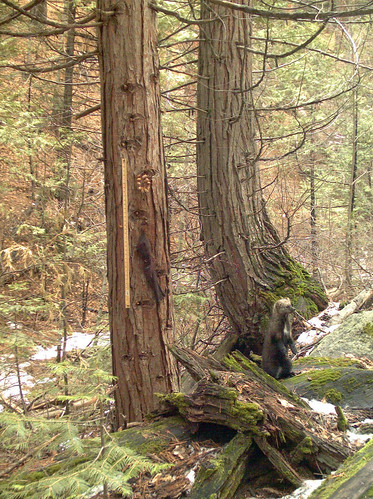Sudden Oak Death Science Symposium Highlights
 Tuesday, June 16, 2009 at 8:37AM
Tuesday, June 16, 2009 at 8:37AM I thought I'd post some highlights from the SOD Science Symposium, currently running in Scotts Valley, CA.
Dave Rizzo presented new disease information since the first isolations (9 years ago this week!) in 2000 to today. Some highlights include:
- Across California, there has been filling in of existing areas of the disease, but new areas of confirmation of note:
- furthest north in CA is 45 miles north of Redway, CA; confirmed from stream baiting, and is associated with a nursery. No terrestrial confirmations. In Mendocino, another river baiting example north of Fort Bragg; no terrestrial confirmations.
- There are some exciting management projects ongoing, from preventative treatment to large-scale management.
Alan Kanaskie talked about the Oregon situation. Highlights include:
- Tanoak is critical for SOD in Oregon;
- Monitoring in OR depends on aerial surveys, field surveys and stream baiting. With these methods, they are confident that ramorum only exists in the known quarantine area. However, they are getting rare PCR confirmations out of steam baiting in new watersheds, but they have not been able to replicate with culture, nor have they found any newly infected trees in those watersheds.
- They are confident their management approach is working to slow the spread, and compares a map of Humboldt and Curry counties; in Humboldt, things look worse than in Curry.
Sandra Denman from Forest Research in UK gave an update on Pr in Europe: still mainly a nursery problem, but some interesting facts include:
- Coutries reporting Pr in Europe in 2000 were few, and only 4 countries had outdoor outbreaks; in 2008: 19 countries report Pr in nurseries, and "burgeoning" reports of outdoor outbreaks across western and southern europe.
- In the UK, Pr has been found in 600 nurseries in UK. In outdoor outbreaks, rhodies are the main problem, and outside outbreaks on trees are associated with these ornamentals.
- First use of "kerfuffel" in a science presentation that I have heard.
- P. kernoviae is also important in UK; and last year Pk was found in the Republic of Ireland for the first time.
Clive Brasier, from UK Forestry Commission, talked about P species and increased invasions due to international trade, and weak international biosecurity. Before 2000, about 20% of P sp were threats to forests; since 2000 (with 50+ new P species named), about 60% are threats to trees and forests. He guesses there might be 100-500 unnamed P. species out there that could be invasive in forests. They are now hypothesizing that Pr came from Japan and/or Taiwan.
For more on Sudden Oak Death, check out the OakMapper site, and other oakmapper posts on this blog.
 Maggi | in
Maggi | in  ecology,
ecology,  oakmapper,
oakmapper,  sudden oak death |
sudden oak death | 

 If you love detailed spatial data and/or the bay area, I HIGHLY recommend downloading and exploring the readily available
If you love detailed spatial data and/or the bay area, I HIGHLY recommend downloading and exploring the readily available 
